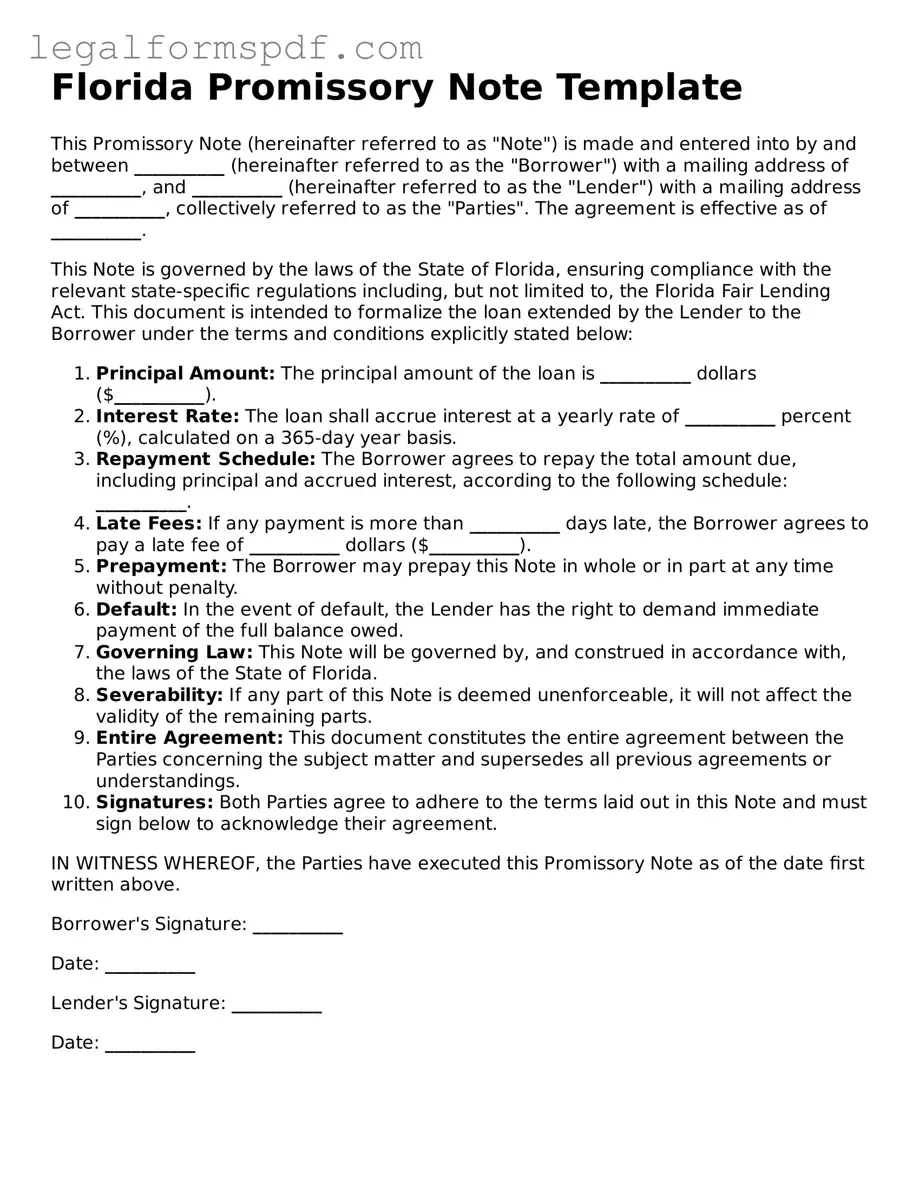Similar to the Florida Promissory Note form, a Mortgage Agreement is a binding document between a borrower and a lender where the borrower pledges real estate as collateral for a loan. This similarity lies in the financial obligation the borrower agrees to, and both documents outline repayment terms, interest rates, and the consequences of non-payment. However, the Mortgage Agreement specifically ties the debt to a real property, offering the lender security through a lien on the property.
Another document akin to the Florida Promissory Note is the Personal Loan Agreement. This agreement outlines the terms under which one party lends money to another. The parallels include details about the loan amount, repayment schedule, interest rate, and actions to be taken in the event of default. What sets them apart is the Personal Loan Agreement's broader application to various types of loans, not limited to a promissory note's formal structure or specific legal standing in Florida.
The IOU (I Owe You) document also shares characteristics with the Promissory Note, serving as an acknowledgment of debt. Though less formal, an IOU specifies the debtor and the amount owed. Unlike the more detailed Promissory Note, IOUs typically lack comprehensive terms like repayment schedules and interest rates, making them less enforceable but similar in their basic function of acknowledging debt.
A Student Loan Agreement, specifically tailored for educational purposes, is comparable to the Promissory Note. It outlines the borrowing terms for a student, including the loan amount, interest rate, and repayment conditions. Both documents are legally binding and set forth the obligations of the borrower. The Student Loan Agreement, however, is distinguished by its focus on funding education and may involve specific conditions related to the student's academic performance or attendance.
The Car Loan Agreement, similar to the Promissory Note, is a contract that specifies the terms under which a lender provides a loan to purchase a vehicle. Key similarities include the loan amount, interest rate, and repayment obligations. The distinction lies in the Car Loan Agreement's focus on auto loans, often including specific details like the vehicle's identification number (VIN), make, model, and any warranties.
A Business Loan Agreement shares many elements with the Florida Promissory Note form, particularly in setting terms for a loan, including repayment schedules and interest. Designed for business financing, these agreements also detail the purpose of the loan and any business-specific conditions, like financial performance requirements or the use of the loan exclusively for business expenses.
The Line of Credit Agreement, while offering more flexibility than a Promissory Note, sets up a borrowing limit that a borrower can draw against, repay, and then borrow from again. It details interest rates, repayment terms, and fees, much like a Promissory Note. The primary difference is the revolving nature of the credit, as opposed to a lump sum loan outlined in a Promissory Note.
Lastly, the Lease Agreement, while primarily used for rental agreements for property or equipment, shares the contractual nature of setting terms between parties. Similar to a Promissory Note, it outlines the financial obligations of the leaseholder (similar to the borrower) toward the leaser (similar to the lender) including payments, security deposits, and breach of contract terms. The main difference is that a Lease Agreement typically involves payment in exchange for the use of property, unlike a monetary loan.
